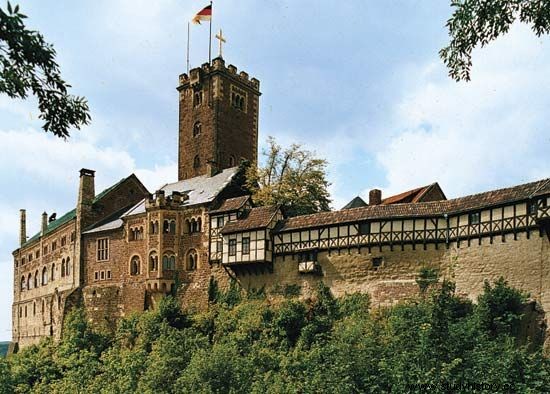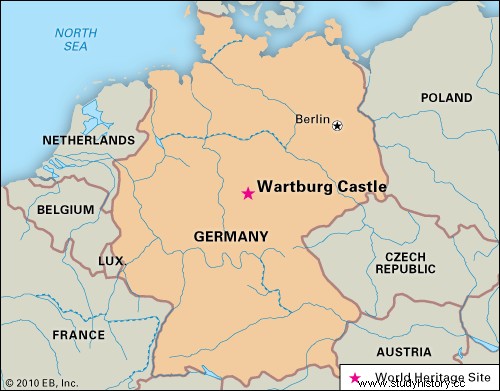Wartburg , lock , known in German history and Legend , standing on a steep hill overlooking the city Eisenach , Thuringia , Germany . The hill was fortified as early as 1080. The Landgrave Hermann I. of Thuringia (died 1217) rebuilt the castle and made it the seat of a lively court, frequented by vagabond poets and musicians like Walther von der Vogelweide and Wolfram von Eschenbach frequented .
Hermanns Wartburg's character was introduced a generation or two later in the as Singer War famous poem mentioned in which poets compete to sing the praises of their rival patrons. Richard Wagner adapted the story for his opera Tannhäuser (1845). From 1485 the castle and the surrounding lands belonged to the Ernestine dukes of Saxony. Elector Friedrich III. Protected by Saxony Martin Luther in the Wartburg from May 1521 to March 1522, and Luther began his German translation of the original Greek New Testament there. In 1817 the Wartburg was the scene of a festival celebrating Luther's 100th birthday. A nationalist demonstration by Protestant German students led to repressive measures by the governments conservative German states.
Karl Alexander of the Ernestinisches Haus Sachsen-Weimar-Eisenach (1818–1901) was the main sponsor of a major restoration of the Wartburg, which had decayed since Luther's time. The castle, which also includes the Romanesque palace of the Thuringian country graves, was a World Heritage Site in 1999.


